分子筛和固体磷酸催化丁烯-2叠合反应动力学
2017-04-07李天松夏佳佳王晓宁
李天松,夏佳佳,周 铭,王晓宁,刘 姝
辽宁石油化工大学化学化工与环境学部,辽宁 抚顺 113001
分子筛和固体磷酸催化丁烯-2叠合反应动力学
李天松,夏佳佳,周 铭,王晓宁,刘 姝
辽宁石油化工大学化学化工与环境学部,辽宁 抚顺 113001
低碳烯烃生产在石油化工领域占有重要地位,因此对低碳烯烃的优化利用,是催化研究的重要课题之一。采用微型固定床反应器,考察了丁烯-2叠合制备润滑油的反应条件,研究了催化剂酸性和孔道对反应的影响,并建立了动力学模型。ZSM-5的最佳反应工艺参数为温度260 ℃、压力4.5MPa、空速(LHSV)1 h-1。固体磷酸(SPAC)的最佳反应工艺参数为温度210 ℃、压力4 MPa、LHSV为1 h-1。ZSM-5与SPAC相比具有较高的液收与C9+馏分选择性,但二聚物含量明显低于SPAC。研究发现,丁烯-2叠合反应性能主要受催化剂酸性和孔道的影响,SPAC具有中孔结构和强酸性,有利于二聚物的生成。ZSM-5具有微孔结构和弱酸性,有利于限制裂化反应,从而促进高碳烯烃的生成。
丁烯-2 ZSM-5分子筛 固体磷酸 齐聚反应 动力学 润滑油
随着工业发展,人们对高品质润滑油要求日益严苛。传统的矿物基础油因不可再生、不易降解及稳定性较差等缺点,已不足以满足人们需求,人们对具有良好黏温性、低温流动性、无毒抗辐射等优点的合成基础油需求量日益上升[1-4]。我国C4资源丰富,通过叠合反应,可将其中丁烯-2制备成润滑油,利用丁烯-2叠合的二聚物、三聚物,再经α-烯烃催化剂转化为合成基础油的主要成分——聚α-烯烃(PAO基础油),体现了极高的工业应用价值[5,6]。
叠合反应中,分子筛酸性酸量[7]和孔道结构[8]是影响的重要因素。文献指出[9],一定酸度范围内,分子筛催化剂酸性越强、酸量越大。本研究将采用ZSM-5分子筛和固体磷酸催化剂,比较孔道与酸性的差异对叠合反应的影响,考察不同反应条件下丁烯-2叠合反应的结果,并对其动力学机理进行分析,以期为工艺优化和工业生产提供依据。
丁烯-2叠合反应的影响因素较多[10,11],目标产物不同,所需反应条件也不同;此外,温度的升高有利于叠合反应的进行;但由于叠合反应是一个典型的串并联反应,温度过高会加剧三聚和高聚反应的发生。因此,研究烯烃叠合反应过程的特点,对设计催化剂及优化反应条件,都有着十分重要的意义。
1 实验部分
1.1 原料及催化剂
用海欣-920气相色谱仪对原料丁烯-2进行分析,组成为(w%):正丁烯3.78%,反-2-丁烯41.45%,顺-2-丁烯54.77%。
用NH4NO3对ZSM-5(SiO2/Al2O3=26)分子筛催化剂、固体磷酸催化剂(SPAC)进行离子交换。
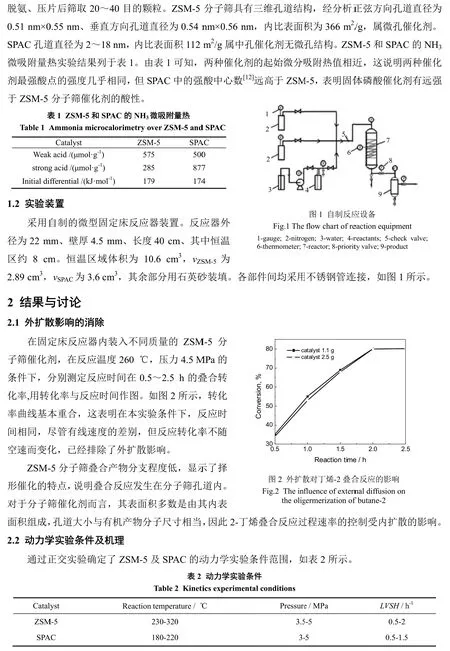
本实验使用表2所示的ZSM-5和SPAC实验条件进行叠合反应。选取原料转化率最高点对应的空时:1 h-1,压力:4.5 MPa,对反应温度进行研究,所得产品的分布如图所示。
通过图3、4可知,ZSM-5催化剂和SPAC相比具有较高的液收与C9+馏分选择性。SPAC的原料转化率虽较低,但其二聚物产率却高于ZSM-5催化剂。比较C5-7液相组分含量可以看出,SPAC的C5-7在210 ℃下收率为6.77%,大于ZSM-5在230 ℃、260 ℃下C5-7的收率。化工生产希望产物馏分窄,ZSM-5裂化反应趋势低,更适合生产高碳烯烃。
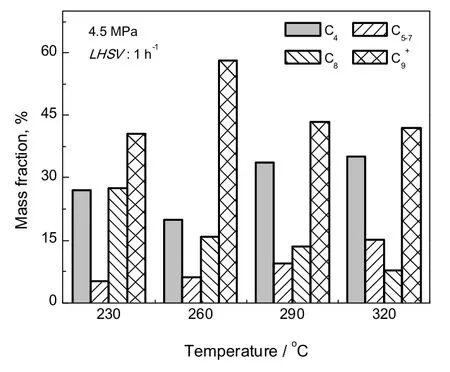
图3 ZSM-5不同温度下的组分分布Fig.3 Distribution of components at different temperatures of ZSM-5
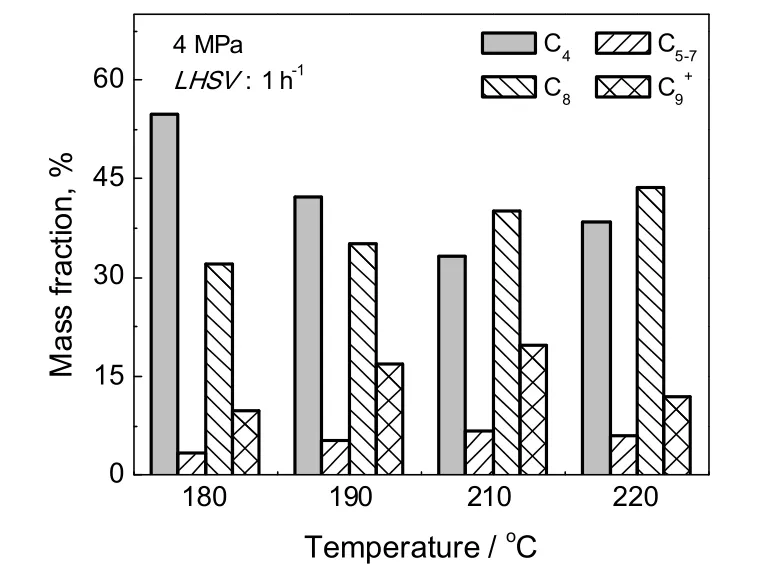
图4 SPAC在不同温度下的组分分布Fig.4 Distribution of components at different temperatures of SPAC
2-丁烯叠合反应是酸催化的正碳离子机理[15]。由色谱分析结果可知,2-丁烯叠合产物含有多种组分,但C16以上的大分子组分含量趋于0。将相同碳数的2-丁烯集总为一个组分,则2-丁烯反应机理如下:

为了方便计算,用质量分数x来表示各组分的反应速率,通过分子扩散速率方程确定反应级数。经化简后的集总动力学方程为:

式中,xi为质量分数(x1、x2、x3、x4分别为C4、C8、C12、C16的质量分数),%;ki为内扩散控制的化学反应速率常数(i=1~3),ki大于0;t为时间,s。
2.3 动力学求解

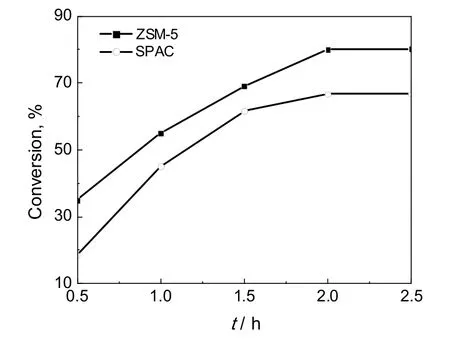
图5 ZSM-5与SPAC下的转化率与时间关系Fig.5 Conversionvstime relation with ZSM-5 or SPAC

表3 ZSM-5的速率常数估计及95%置信区间Table 3 Rate constant estimation and 95 percent confidence interval of ZSM-5

表4 SPAC的速率常数估计及95%置信区间Table 4 Rate constant estimation and 95 percent confidence interval of SPAC
在稳定的反应条件下,宏观反应速率常数K仅与温度有关,根据Arrhenius方程得:

将表3、4中数据通过origin进行拟合,求得的反应速率常数Ki表达式如表5所示:

表5 ZSM-5与SPAC的反应速率表达式Table 5 Reaction rate expression of ZSM-5 and SPAC
活化能数据显示:SPAC的二聚活化能小于ZSM-5,其强酸中心数远高于ZSM-5且孔径也大于ZSM-5,这有利于叠合反应进行,故其二聚物含量应较高,这与图3吻合;SPAC与ZSM-5的三聚活化能均有增加,且SPAC高于ZSM-5的三聚活化能。这表明二者的三聚反应阻力均比合成二聚物时有所增加,且SPAC较ZSM-5更难进行。这是由于ZSM-5是微孔结构,存在孔道扩散限制作用,延长了物料在活性中心上的停留时间。有利于中间产物在活性中心上进一步反应,且ZSM-5酸性较弱,降低了叠合产物的裂化趋势,从而提高了高碳烯烃的选择性。
2.4 动力学模型检验
将上述ki与T的关系式代入方程(4)~(7)中,可以得到各组分质量分数的计算值,再将计算值与实验值进行误差分析。ZSM-5和SPAC的分析结果作图,如下所示:
图6和7中数据表明,ZSM-5和SPAC两种催化剂的叠合反应实验数据与动力学方程组的数值解吻合较好,ZSM-5的相对误差为4%~6%,SPAC的相对误差为3%~7%,说明本研究建立的集总动力学模型在所涉及的实验范围内是可行的。
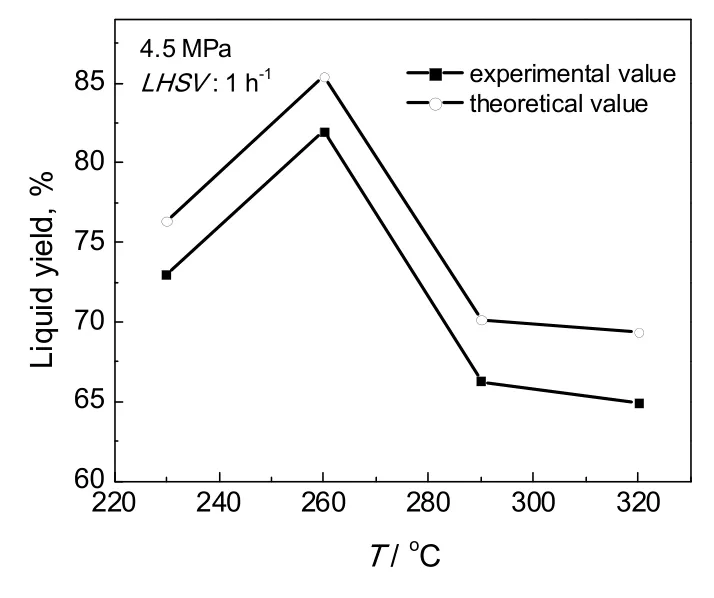
图6 ZSM-5实验值和计算值的误差线Fig.6 Experimental and calculated value’s error line of ZSM-5
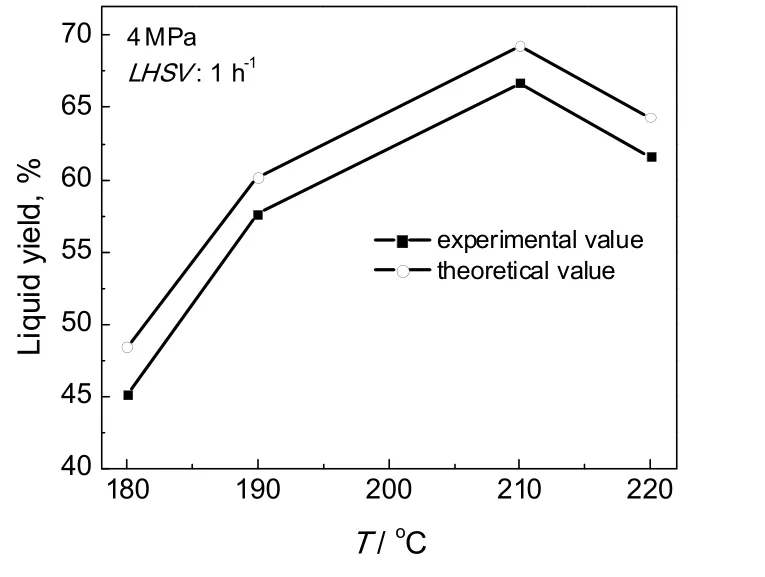
图7 SPAC实验值和计算值的误差线Fig.7 Experimental and calculated value’s error line of SPAC
3 结 论
a)通过表征可知ZSM-5催化剂是微孔材料,SPAC是中孔材料。同时,它们的起始吸附热相似,这表示ZSM-5与SPAC中最强酸点的强度几乎相同,但ZSM-5的强酸中心数量少于SPAC的强酸中心数,说明前者酸性低于后者。
b)ZSM-5与SPAC催化剂在最佳反应条件下,进行2-丁烯叠合反应。ZSM-5催化剂和SPAC相比具有较高的液收与C9+馏分选择性。SPAC的原料转化率虽较低,但其二聚物产率却高于ZSM-5催化剂。两种催化剂的C9+组分分布均呈现先增后减的趋势,且均在最佳反应条件下达到峰值。
c)酸性和孔道是影响叠合反应的主要因素。ZSM-5属微孔结构,因其择形催化的特点加上弱酸性可减弱产物裂化趋势,导致产物中三聚物含量高于SPAC。同理,由于其微孔结构存在内扩散限制,且酸性较弱,导致其二聚物产量低于SPAC。
d)检验动力学模型,由实验值与计算值的误差统计结果表明,在涉及的实验范围内,所建立的动力学模型是吻合的。ZSM-5催化剂更有利于生产三聚物,SPAC催化剂更有利于生产二聚物,选择何种催化剂取决于实际需要。
[1] Coelho A, Caeiro G, Lemos M. 1-Butene oligomerization over zsm-5 zeolite: part 1 - effect of reaction conditions [J]. Fuel, 2013, 111(9):449-460.
[2] Fei Y W, Guo F, Yao T, et al. Thermal oxidation of two aviation synthetic lubricant base oils [J]. Measurement Science & Instrumentation, 2015, 6(4):396-404.
[3] Habib N, Yunus R, Rashid U, et al. Transesterification reaction for synthesis of palm-based ethylhexyl ester and formulation as base oil for synthetic drilling fluid [J]. Journal of oleo science, 2014, 63(5):497-506.
[4] 沈和平, 王 昊, 刘瑞民, 等. 费托合成制取高端润滑油基础油的研究 [J]. 科技资讯, 2013, 3(11):88-91.Shen Heping, Wang Hao, Liu Ruimin, et al. Study on preparation of high fischer tropsch synthesis lube base oil [J]. Science & Technology Information, 2013, 3(11):88-91.
[5] 曹胜先, 陈 谦, 祖春兴. 线性α-烯烃的技术现状及应用前景 [J]. 中外能源, 2012, 17(2):80-85. Cao Shengxian, Chen Qian, Zu Chunxing. Technical present situation and application prospect of linear alpha olefins [J]. Sino-Global Energy, 2012, 17(2):80-85.
[6] 王维伟, 蒋 山, 王永斌, 等. 离子液体催化合成高黏度指数基础油工艺研究 [J]. 润滑与密封, 2015, 40(11):19-22. Wang Weiwei, Jiang Shan, Wang Yongbin, et al. Study on synthesis of high viscosity index base oil by ionic liquid catalysis [J]. Lubrication Engineering, 2015, 40(11):19-22.
[7] 刘 姝, 李春林, 刘广宇, 等. 丁烯-2在HZSM-5分子筛上的齐聚反应 [J]. 催化学报, 2008, 29(4): 319-324. Liu Shu, Li Chunlin, Liu Guangyu, et al. The oligomer reaction of 2-butene on HZSM-5 molecular sieve [J]. Chinese Journal of Catalysis, 2008, 29(4):319-324.
[8] 李玲玲, 聂小娃, 宋春山, 等. H-ZSM-5分子筛催化二甲苯异构化的反应机理 [J]. 物理化学学报, 2013, 29(4):754-762. Li Lingling, Nie Xiaowa, Song Chunshan, et al. Reaction mechanism of xylene isomerization catalyzed by H-ZSM-5 molecular sieve[J].Acta Physico-Chimica Sinica.2013,29(4):754-762.
[9] 翟云平, 李明罡, 罗一斌. ZSM-5 分子筛催化1-己烯叠合反应的研究 [J]. 石油炼制与化工, 2015, 46(9):7-11. Zhuo Yunping, Li Mingpei, Luo Yibin. Study on the catalytic reaction of 1-butylethylene with ZSM-5 molecular sieve [J]. China Petroleum Processing Petrochemical Technology, 2015, 46(9):7-11.
[10] 刘 姝, 王立刚, 刘宏超, 等. 几种分子筛催化剂对丁烯-2齐聚反应的催化性能 [J]. 催化学报, 2007, 28(10):919-924. Liu Shu, Wang Ligang, Liu Hongchao. Catalytic performance of several kinds of molecular sieve catalysts for the 2-butene oligomerization [J].Chinese Journal of Catalysis, 2007, 28(10):919-924.
[11] Wang K,Villano S M, Dean A M. Experimental and kinetic modeling study of butene isomer pyrolysis: part I. 1- and 2-butene [J]. Combustion and Flame, 2016, 173(11):347-369.
[12] 刘雪暖, 滕波涛, 段红铃. 异丁烯齐聚固定床反应器的模拟 [J]. 化学反应工程与工艺, 2002, 18(3):279-288. Liu Xuenuan, Teng Botao, Yin Hongling. Simulation of fixed bed reactor of isobutene oligomerization [J]. Chemical Reaction Engineering and Technology, 2002, 18(3):279-288.
Oligomerization Kinetics of Butene-2 Catalyzed by ZSM-5 Molecular Sieve or Solid Phosphoric Acid
Li Tiansong, Xia Jiajia, Zhou Ming, Wang Xiaoning, Liu Shu
Liaoning Shihua University, Chemical and Environmental Department, Fushun 113001, China
The production of light olefins plays an important role in the field of products for petrochemical industry. Therefore, optimized utilization of the light olefins is one of the important topics in the catalysis research. In this paper, oligomerization conditions of butene-2 have been investigated in a miniature fixed-bed reaction system. The effect of acidity and pore structure were studied, and the kinetic model was established. The optimum reaction parameters of ZAM-5 were at temperature of 260 ℃, pressure of 4.5 MPa, LHSV (liquid hourly space velocity) of 1 h-1. The optimum reaction parameters of SPAC (solid phosphoric acid) were at temperature of 210 ℃, pressure of 4 MPa and LHSV of 1 h-1. Compared with SPAC, ZSM-5 had higher liquid yield and C9+fraction selectivity, but its dimer content was significantly lower than that of SPAC. It was found that the reaction of butene-2 was mainly influenced by the acidity and pore structure of the catalyst. SPAC has a mesoporous structure and strong acidity, which was beneficial to the formation of dimer. ZSM-5 has a microporous structure and weak acidity, which is beneficial to limit the cracking reaction and promote the formation of high olefins.
butene-2; ZSM-5 molecular sieve; solid phosphoric acid; oligomerization; kinetics; lubricant oil
O643
A
1001—7631 ( 2017 ) 01—0029—06
10.11730/j.issn.1001-7631.2017.01.0029.06
2016-11-22;
2016-12-15。
李天松(1993—),男,硕士研究生;刘 姝(1965—),女,教授,通讯联系人。E-mail:liuxinlin-yj@163.com。
国家自然科学基金(21276120);辽宁省科技厅产业基地发展建设计划(2011415048)。
